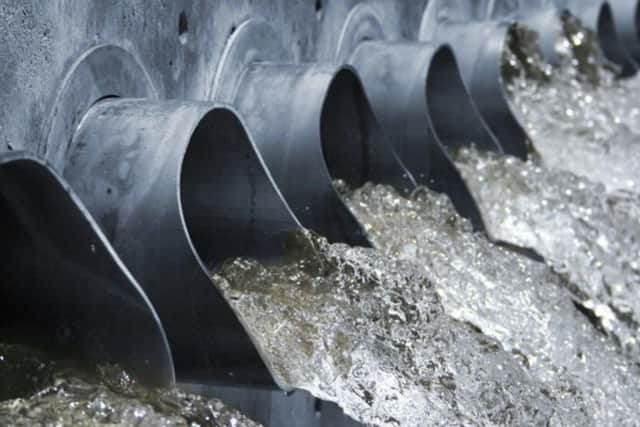Sewage spills into Yorkshire waterways down but mostly due to drought
and live on Freeview channel 276
The Environment Agency published its annual findings from monitoring storm overflows today, showing the amount of sewage let into the country’s rivers in 2022.
The amount of time sewage was allowed to spill into Yorkshire’s waterways fell by 43 per cent, from 406,131 hours to 232,054 hours.
Advertisement
Hide AdAdvertisement
Hide AdBut John Leyland, Environment Agency executive director, said this was largely down to a below average rainfall, not company action.


Storm overflows are a safety valve designed to release excess storm water from the sewage system into rivers or the sea during periods of rainfall and snowmelt to ensure they are not overwhelmed – causing flooding and sewage backing up into streets and homes. Water companies should only do this under strictly permitted conditions so monitoring like this holds water companies to account.
Rebecca Pow, Water Minister, said monitoring increased from seven per cent in 2010 to a record 91 per cent now, making companies more accountable.
She added: “The volume of sewage being discharged into our waters is unacceptable and we are taking action to make sure polluters are held to account.
Advertisement
Hide AdAdvertisement
Hide Ad“We have set the strictest targets ever on water companies to reduce sewage discharges and are requiring them to deliver the largest infrastructure programme in their history.”
A spokesperson for Yorkshire Water said it was working to improve.
They said: “While 2022’s figures on overflows show improvement we understand they happen more than our customers would like, and we are determined to tackle this issue and do our bit for river health.
“Tackling overflows, which were designed into the system as a relief valve, is a priority for us, but it is also a significant task.
Advertisement
Hide AdAdvertisement
Hide Ad“In Yorkshire, we have over 2,200 overflows and we know replumbing the whole of Yorkshire is not a quick fix as it would be both significantly disruptive and costly to customers and we need to ensure water bills remain affordable, but we are committed to playing our part to improve Yorkshire’s rivers and coastline and move faster than the government targets.”
Yorkshire Water said it had a £108 million storm overflow improvement plan in motion, in addition to committing £147 million up to the end of 2025.
“Storm overflows are a priority for us and that’s why we’ve funded these improvements,” they said. “We’re going beyond the government’s storm overflow reduction plan and we’re already planning our largest ever environmental investment programme between 2025 and 2030, this is only the beginning as we embark on the biggest investment programme since privatisation.”
The government said it would cost between £350 billion and £600 billion to eliminate sewage discharges, as water companies would need to completely separate the sewage and rainwater systems that homes and businesses across the country use. This would require significant increase in bills and widespread disruption, the government said.
Advertisement
Hide AdAdvertisement
Hide AdIn a bid to reduce discharges, it launched the storm overflows discharge reduction plan, which sets water companies strict targets and requires them to invest £56 billion in upgrading their networks.